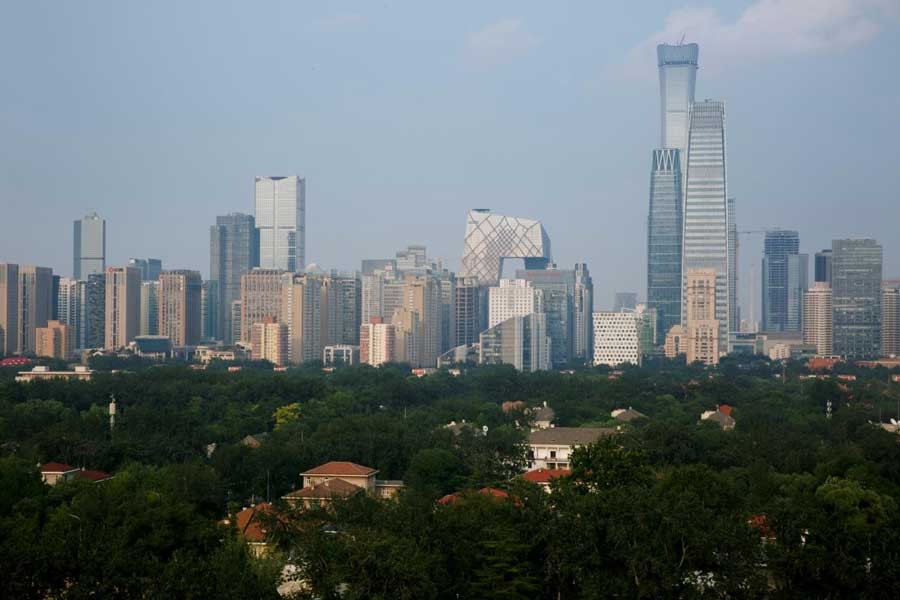China’s economy is showing further signs of cooling as the US prepares to impose even tougher trade tariffs, with investment in the first seven months of the year slowing to a record low and retail sales softening, data showed on Tuesday.
Fixed-asset investment growth slowed more than expected to 5.5 per cent in January-July, highlighting weakening domestic demand and faltering business confidence as the US trade war adds to domestic pressures from Beijing’s crackdown on debt and pollution.
The pace of investment was the weakest on record going back to early 1996, according to data on Reuters Eikon. Investment had been expected to grow 6.0 per cent in the first seven months of the year, steady from January-June.
Retail sales also missed expectations, with Chinese consumers more reluctant to spend on everything from cosmetics and other everyday goods to big-ticket items such as home appliances and furniture.
Sales rose 8.8 per cent in July from a year earlier, below an expected 9.1 per cent and down from 9.0 per cent in June.
Industrial output failed to accelerate as expected. It rose 6.0 per cent in July, the National Bureau of Statistics said, missing analysts’ estimates for a rise of 6.3 per cent and compared with a rise of 6.0 per cent in June.
While recent readings on trade and inflation have so far shown only limited impact from the trade war with Washington on the world’s second-largest economy, there are growing concerns that the escalating dispute could produce a sharper Chinese economy slowdown than expected just a few months ago.
China and the United States have slapped a series of tit-for-tat tariffs on each other’s goods in July and August and more are due to kick in next week.
In one of the few brighter spots in the data, private sector fixed-asset investment rose 8.8 per cent in January-July, compared with an increase of 8.4 per cent in the first half. Private investment accounts for about 60 per cent of overall investment in China.
But growth in infrastructure spending, a powerful economic driver last year, slowed to 5.7 per cent in the first seven months of the year, compared with a rise of 7.3 per cent in January-June.
Still, there were some very early signs that Beijing’s recent shift in focus to growth boosting measures may already be helping to cushion the broader economic slowdown.
Real estate investment rose 13.2 per cent in July from the same period a year earlier, the fastest pace since October 2016 and higher than June’s 8.4 per cent rise, according to Reuters calculations.
July new construction starts jumped 32.4 per cent on-year, the most since late 2014.
New infrastructure loans also rebounded sharply in July to 172.4 billion yuan ($25.05 billion), an increase of 46.9 billion yuan over the month before, China’s banking and insurance regulator said in a statement on Saturday.
China’s Politburo said in a meeting last month it would keep its economic growth within a reasonable range and achieve this year’s target, despite the risks to growth.
In a bid to boost growth and weather the US trade war, Beijing has said it would step up infrastructure investment in targeted areas and resort to more accommodative fiscal policy. It also has announced tax cuts and large liquidity injections which are tamping down borrowing costs.
That has raised fears among some China watchers that Beijing is returning to the days of debt-fueled stimulus, and is relaxing its multi-year campaign to reduce risks in the financial system and a mountain of debt.
But unless business conditions deteriorate markedly, most economists believe Beijing will stick with its deleveraging campaign, albeit at a more cautious pace, as it waits to see how the trade dispute plays out.
For now, a return to massive money printing like that seen during the global financial crisis, which would risk a further debt blowout, does not seem to be on the cards.


